The complete ‘Favela Climate Memory’ exhibition—the result of a collective oral history project that spanned over three years—was launched on Saturday, May 3, at the Maré Museum. Organized by Rio de Janeiro’s Sustainable Favela Network (SFN)*, the exhibition is the outcome of an unprecedented collective oral history research project, which systematized 1,145 testimonials from 382 residents of ten favelas across Rio de Janeiro. The project was developed by eleven museums and favela memory collectives that are members of the SFN: the Maré Museum (Complexo da Maré favelas), the Sankofa Museum (Rocinha favela), the Historic Orientation and Research Nucleus of Santa Cruz (organizer of the Antares favela climate memory circle), the Favela Museum (Pavão-Pavãozinho/Cantagalo favelas), the Vidigal Memories Nucleus (Vidigal favela), Alfazendo (City of God favela), the Serra da Misericórdia Integration Center (Complexo da Penha favelas), the Horto Museum (Horto favela), Fala Akari (Acari favela), Conexões Periféricas (Rio das Pedras favela), and the Evictions Museum (Vila Autódromo favela). The initiative also received special support from Përɨsɨ (Laboratory of Ecology, Knowledge, and Democracy at the Fluminense Federal University), as well as from the ClimateWorks Foundation, Instituto Clima e Sociedade (iCS), and the re:arc institute.
The Full Launch Was Held at the Maré Museum, Where the First Climate Memory Circle Had Taken Place
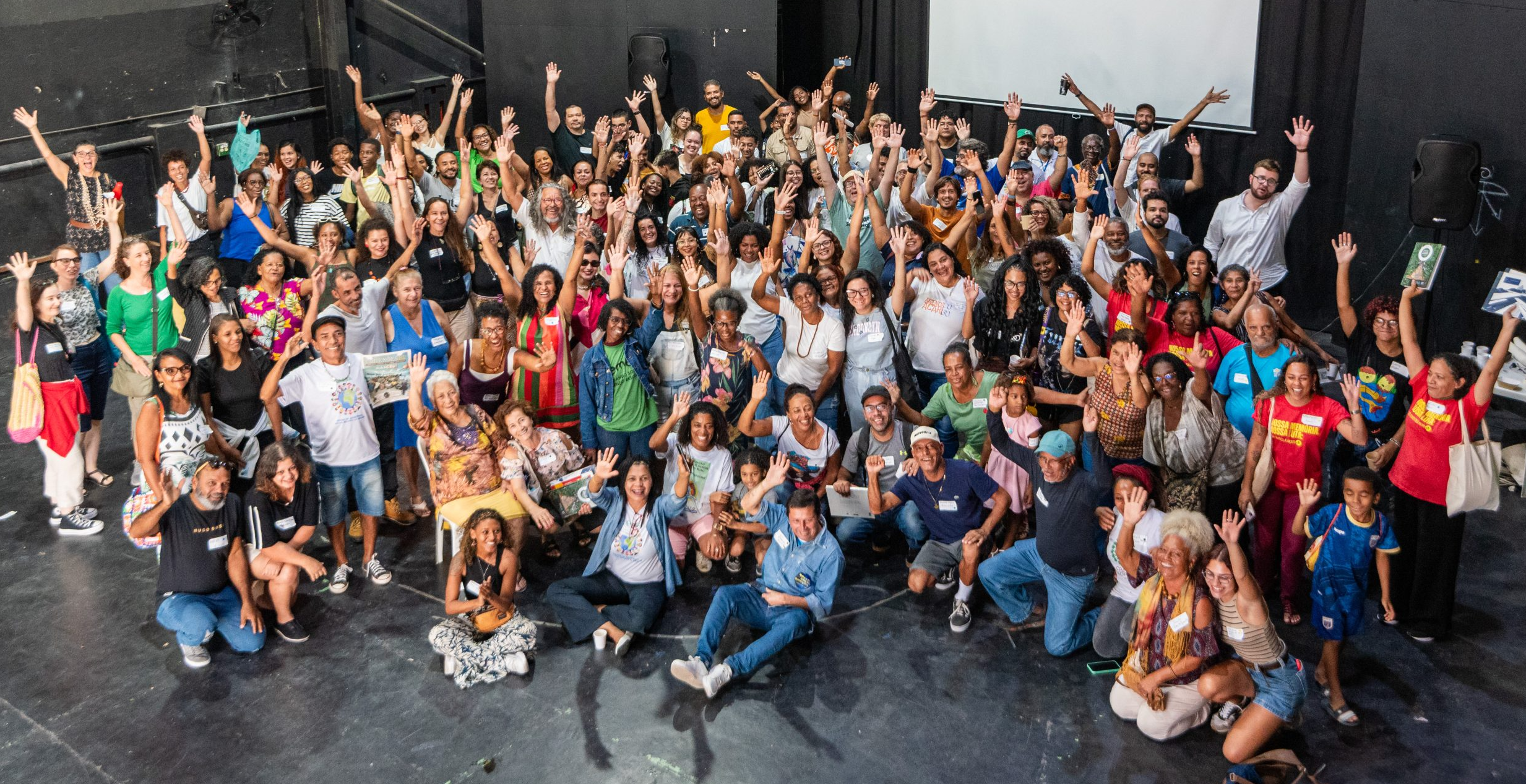
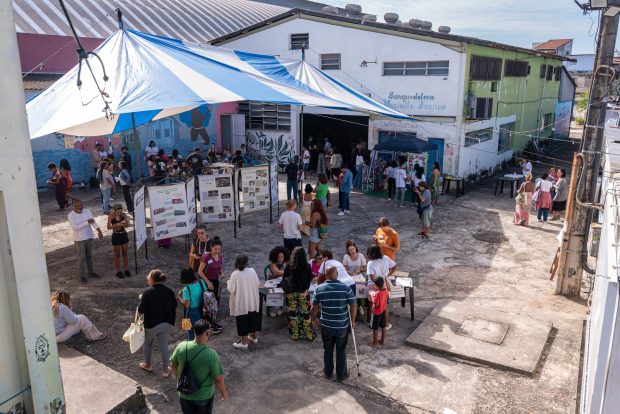
Just one month after its launch at the Maré Museum, the ‘Favela Climate Memory’ exhibition has been making waves, featured in The Guardian under the headline “How memories of clean water, frogs and fresh air could help save Rio’s favelas from future climate disaster,” as well as in Bom Dia Favela and eight other media outlets. The organizers have received invitations hoping to showcase the exhibition at Brazil’s national public health foundation (Fiocruz), at the National Congress, and COP30. But before that, it will first travel through some of the favelas that brought it to life: Maré, Acari, Rio das Pedras, and Vidigal.
The launch of the full exhibition—which has more than doubled in size since its partial launch in 2023—brought together 320 people from across the city of Rio de Janeiro, Greater Rio’s Baixada Fluminense and Leste Fluminense regions, as well as various Brazilian states and other nations. In addition to the press, the event welcomed students, community organizers from several favelas, children, researchers, and public officials.
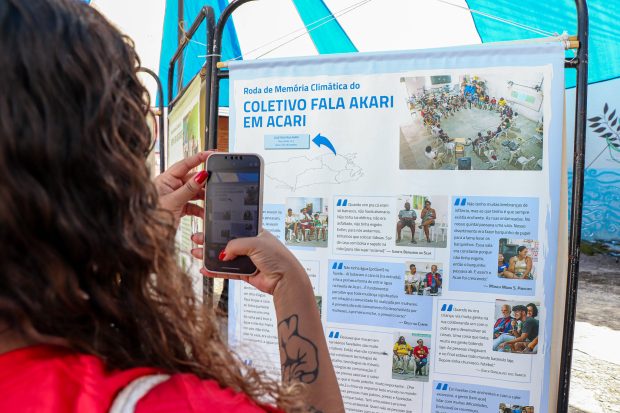
Everyone gathered to learn, celebrate, and reflect on the history of Rio de Janeiro—told in an innovative, profound, collective, and urgent way through the voices of hundreds of favela residents who lived the founding and building of their communities.
The unmissable exhibition, open to the public until July 30 at the Maré Museum’s temporary gallery (book your visit here), features a wide range of materials.
It begins with 13 banners that tell the story of the exhibition and highlight powerful quotes from each of the ten major climate memory circles held by the community museums and memory projects behind the initiative.
At the heart of the exhibition is an extensive timeline featuring 60 panels, built from dates identified during the climate memory circles held in the ten participating favelas: the three largest favelas in the city (Rocinha, Rio das Pedras, and Complexo da Maré); those marked by severe climate impacts (Acari, Vidigal, and Pavão-Pavãozinho/Cantagalo); others that became destinations for climate-displaced populations (Antares and City of God); and communities with standout projects for coexisting with nature (Horto and Complexo da Penha). The colors of the panels reflect the community that contributed each historical record: blue tones represent the city’s North Zone, earth tones the South Zone, and green tones the West Zone. In chronological order, the timeline presents key events in the histories of the favelas—and, in effect, of the entire city—from the 16th century to 2024.
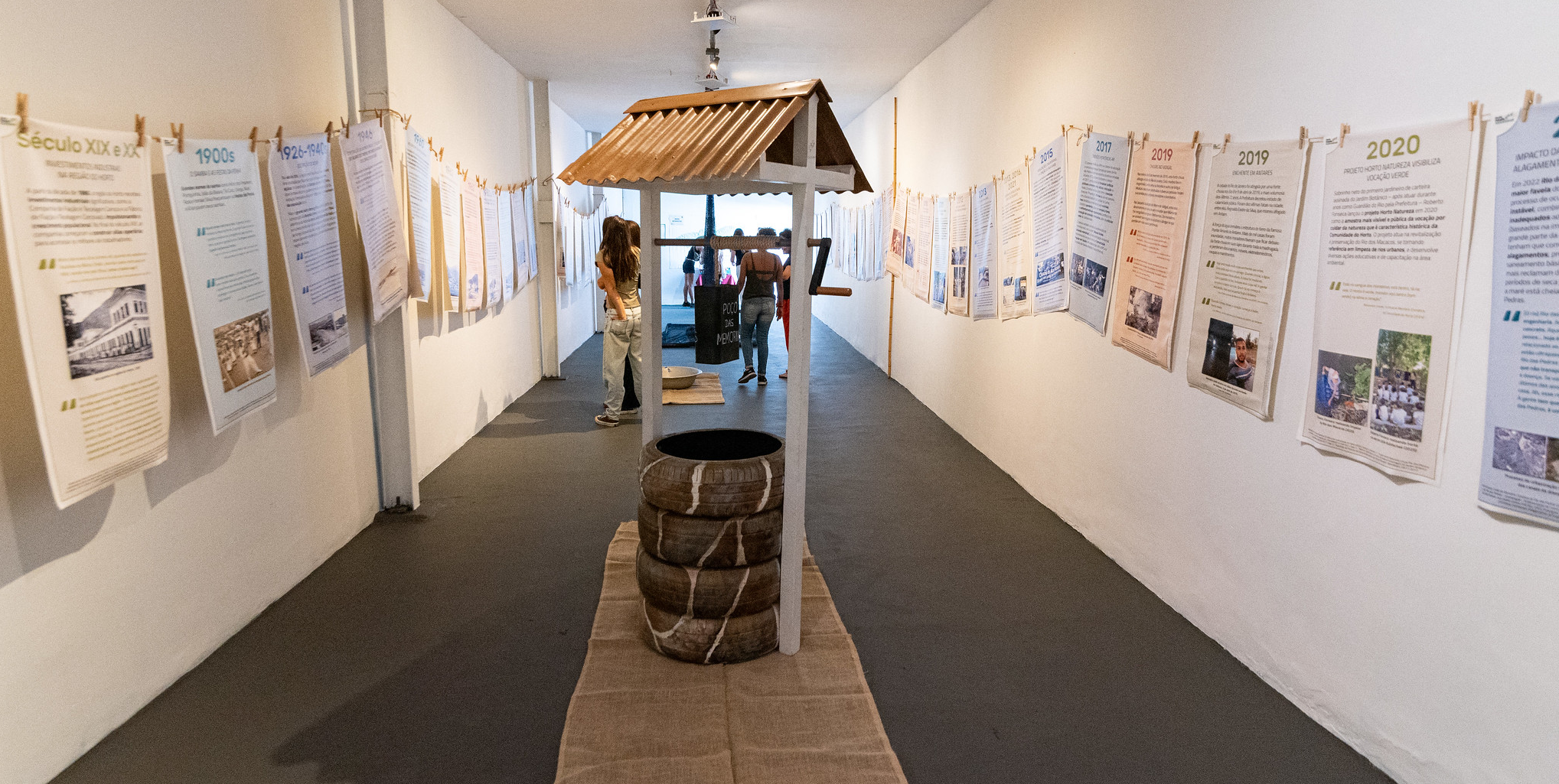
At the center of the installation is the “Well of Memories,” where visitors can handle 265 captioned photos from the participating favelas.
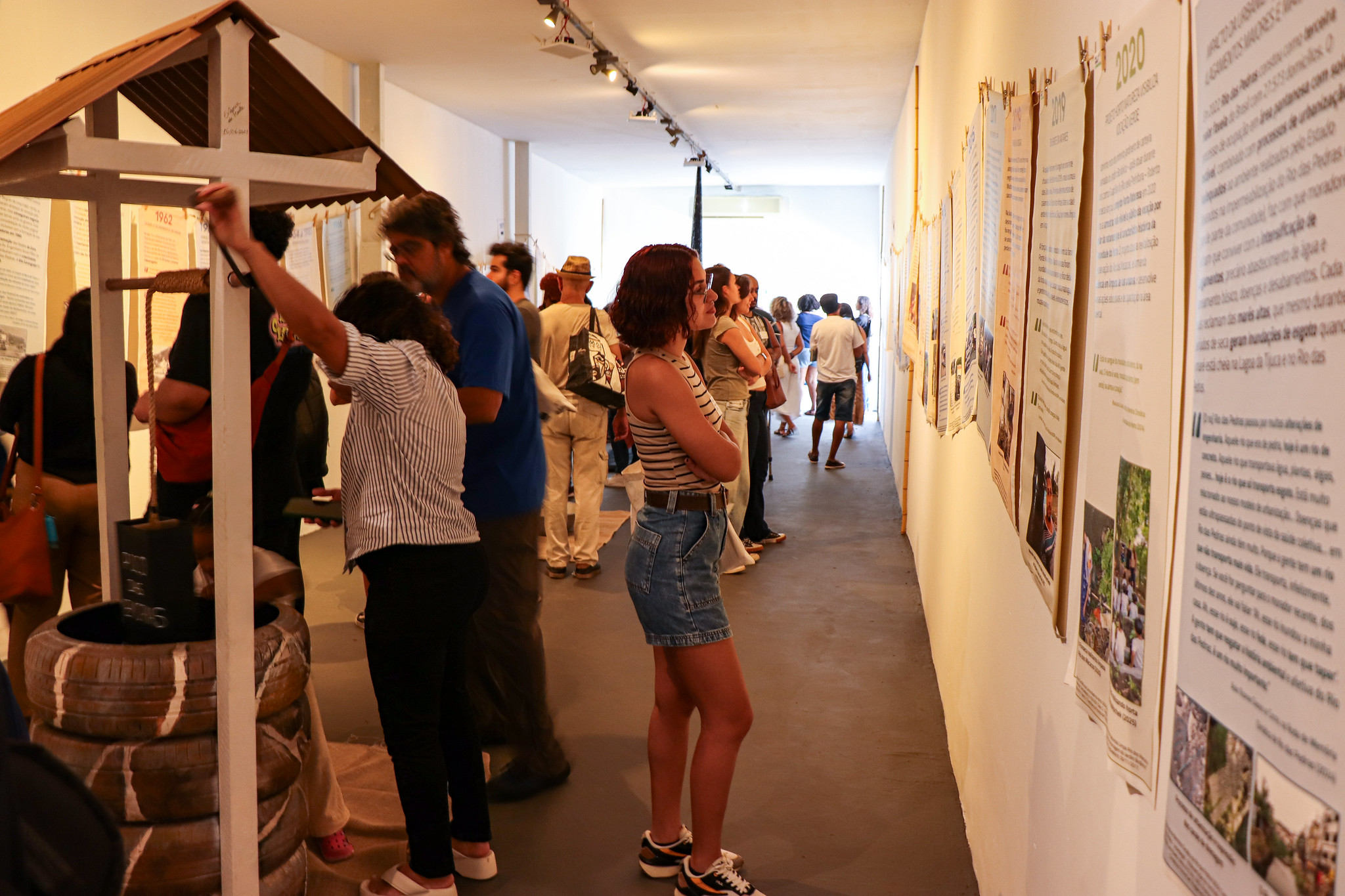
The well was created by visual artist Evânia de Paula, inspired by a well in Vidigal that was frequently mentioned during her community’s memory circle.
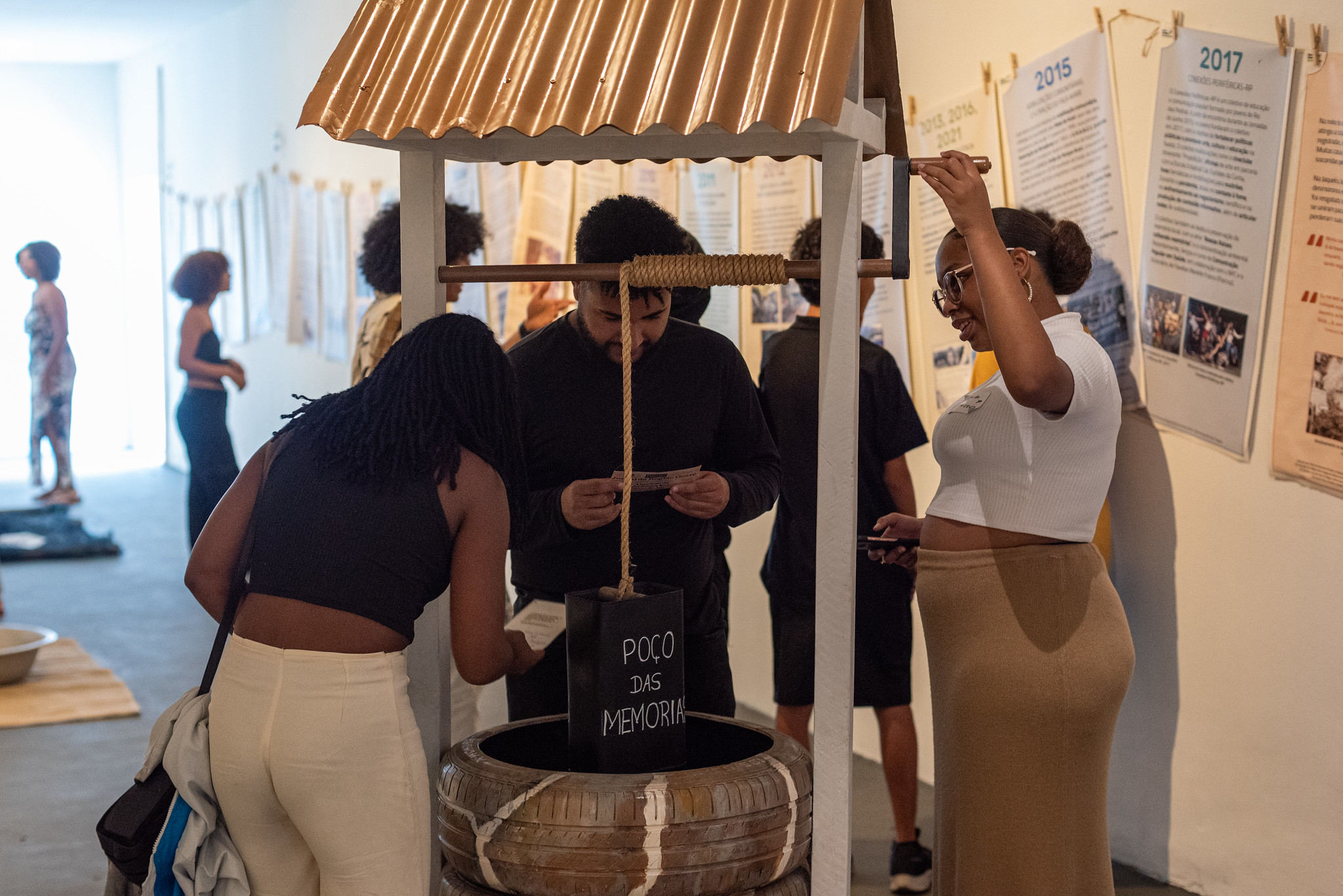
Next door, in the Maré Museum’s auditorium, the 45-minute documentary “Favela Climate Memory” offers visitors a chance to understand and feel the climate memory circles that led to the exhibition—whose voices are featured, what dates and memories were compiled, and how the project’s methodology was developed.
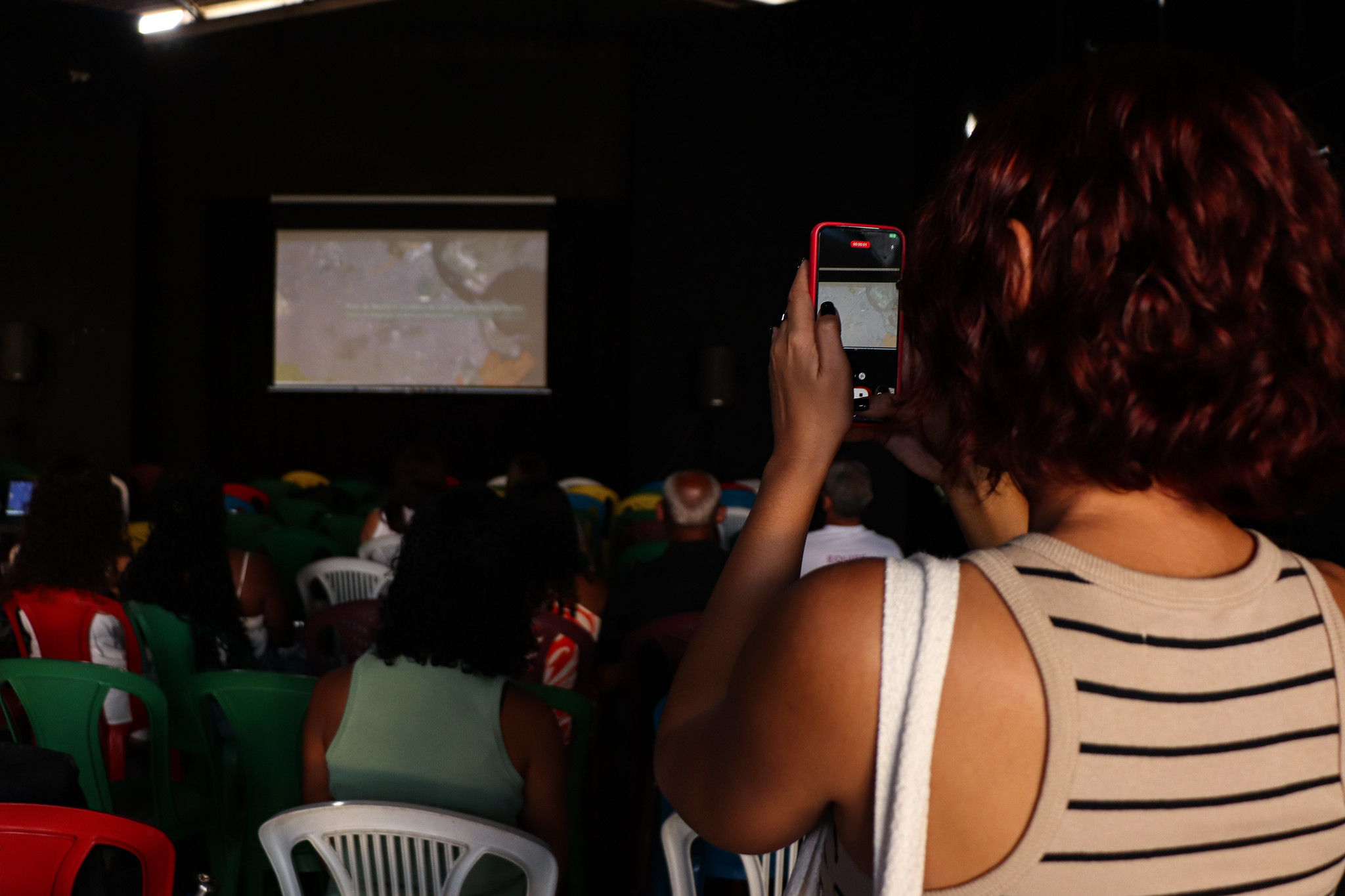
Watch the documentary “Favela Climate Memory” with English Subtitles, Featured in the Exhibition:
At the end of the visit, everyone is invited to contribute their own memories to the interactive map, hand-stitched by artisan Marli Damascena, co-founder of the Maré Museum.
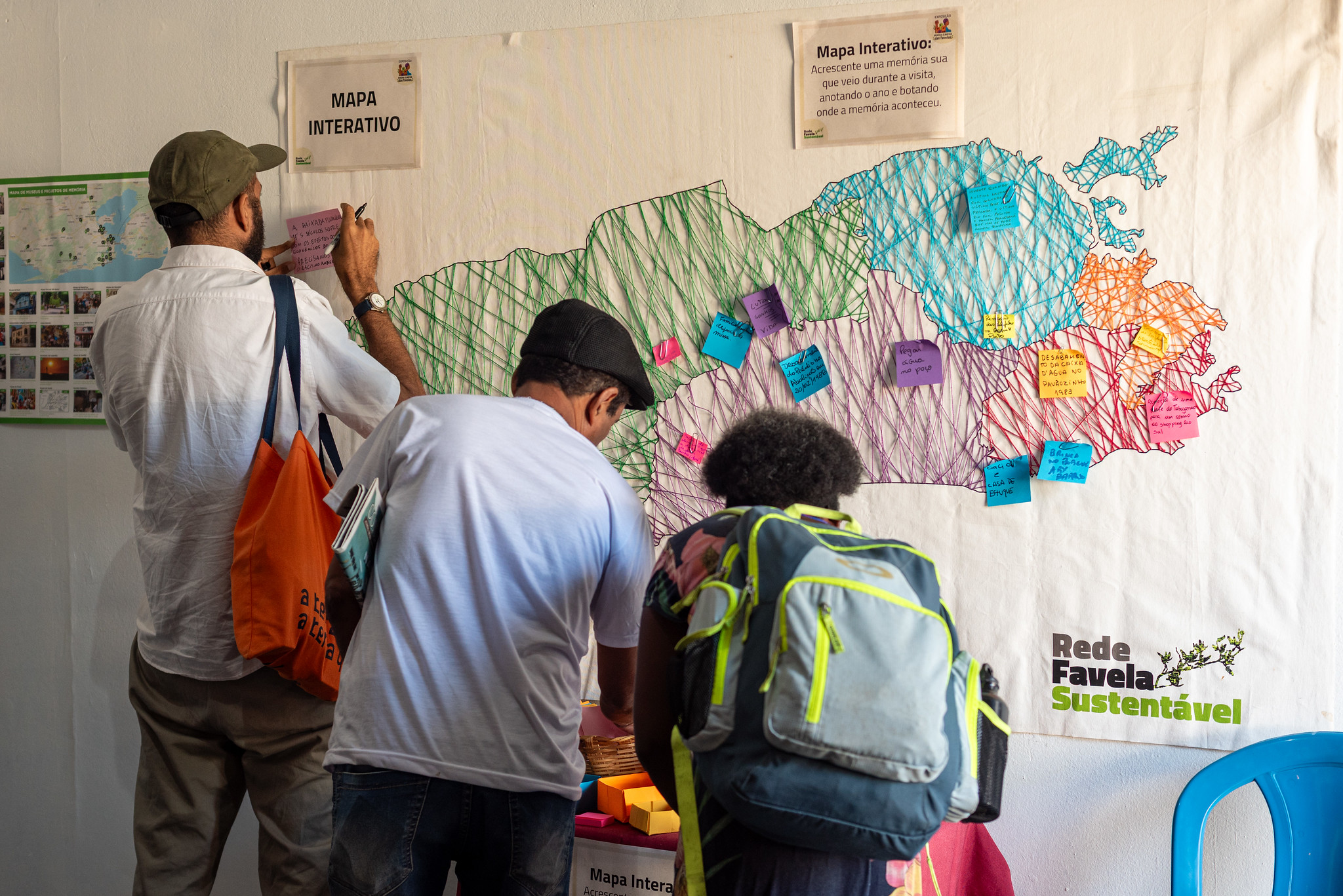
There, memories and feelings from the public are collected as they visit the exhibition.
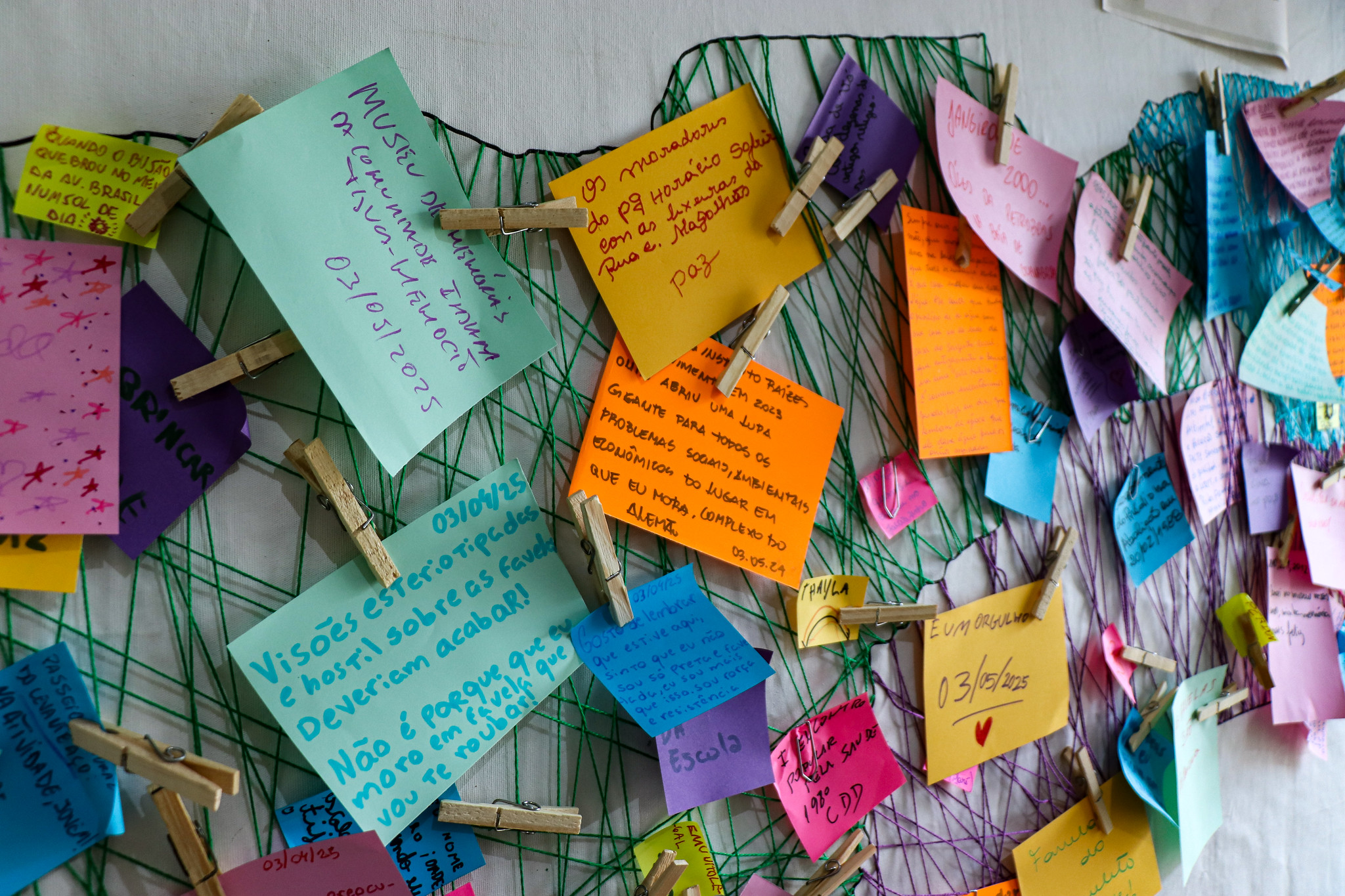
At the inaugural exhibition—open until the end of July at the Maré Museum—the public can also interact with a fishing net belonging to the museum itself. On the floor remains a single, symbolic basin—the same one used to collect raindrops during the exhibition’s setup on a rainy day, in that very spot, inside this institution that holds such importance, yet continues to be underfunded by both State and society.
Visit this must-see exhibition, open to the public until July 30 in the Maré Museum’s temporary gallery—book your visit here. If you’re interested in bringing the Favela Climate Memory exhibition to your institution or community, check out the guidelines on how to request it in Portuguese.
‘The Favela Has Always Been a Circle’: Ten Favelas Share Their Memories at the Exhibition Opening
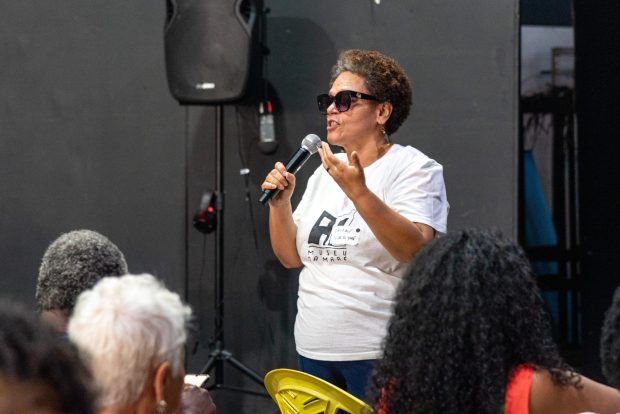
The opening of the Favela Climate Memory exhibition at the Maré Museum also marked the start of a powerful Museum Month in Rio de Janeiro. Claudia Ribeiro, coordinator of the Maré Museum and director of the Center for Studies and Solidarity Actions of Maré (CEASM), welcomed visitors at the exhibition’s launch.
“It’s a great joy to welcome so many people on a sunny Saturday morning in Rio de Janeiro. [Even] with a Lady Gaga concert [put on by the City tonight], this place is packed. This shows the strength of favelas, the strength of community-based social movements that are truly engaged with environmental issues… in the very areas where each of us experiences the impacts of climate change in our own skin! It’s a joy for us to welcome everyone here at the Maré Museum.” — Claudia Ribeiro
Bárbara Nascimento, from the Vidigal Memories Nucleus in the Vidigal favela, read the exhibition’s curatorial text as she invited fellow hosts from the museums and memory projects that shaped the Favela Climate Memory exhibition to come forward and speak.
![Hosts responsible for the initiative, each one representing a museum or memory project that held one of the 10 favela climate memory circles: Bruno de Almeida (NOPH), Leonardo Ribeiro (Antares), [giving his talk] Douglas Heliodoro (Conexões Periféricas/Rio das Pedras), Antônio Carlos Firmino (Sankofa Museum/Rocinha), Rosi Firmino (Sankofa Museum/Rocinha), Marli Damacena (Maré Museum), Bárbara Nascimento (Vidigal Memories Nucleus), Leticia Pinheiro (Fala Akari Collective/Acari), Márcia Souza (Favela Museum/Pavão-Pavãozinho and Cantagalo), Lidiane Santos (Alfazendo/City of God), Iara Oliveira (Alfazendo/City of God), Emilia Souza (Horto Museum), Julia Soares (Serra da Misericórdia Integration Center/Complexo da Penha) and Maria da Penha Macena (Evictions Museu/Vila Autódromo) reflect on the impact of the climate memory circles in their favelas. Photo: Alexandre Cerqueira Hosts responsible for the initiative, each one representing a museum or memory project that held one of the 10 favela climate memory circles: Bruno de Almeida (NOPH), Leonardo Ribeiro (Antares), [giving his talk] Douglas Heliodoro (Conexões Periféricas/Rio das Pedras), Antônio Carlos Firmino (Sankofa Museum/Rocinha), Rosi Firmino (Sankofa Museum/Rocinha), Marli Damacena (Maré Museum), Bárbara Nascimento (Vidigal Memories Nucleus), Leticia Pinheiro (Fala Akari Collective/Acari), Márcia Souza (Favela Museum/Pavão-Pavãozinho and Cantagalo), Lidiane Santos (Alfazendo/City of God), Iara Oliveira (Alfazendo/City of God), Emilia Souza (Horto Museum), Julia Soares (Serra da Misericórdia Integration Center/Complexo da Penha) and Maria da Penha Macena (Evictions Museu/Vila Autódromo) reflect on the impact of the climate memory circles in their favelas. Photo: Alexandre Cerqueira](https://rioonwatch.org/wp-content/uploads/2025/06/Hosts-from-the-museums-and-memory-projects-that-shaped-Favela-Climate-Memory.png)
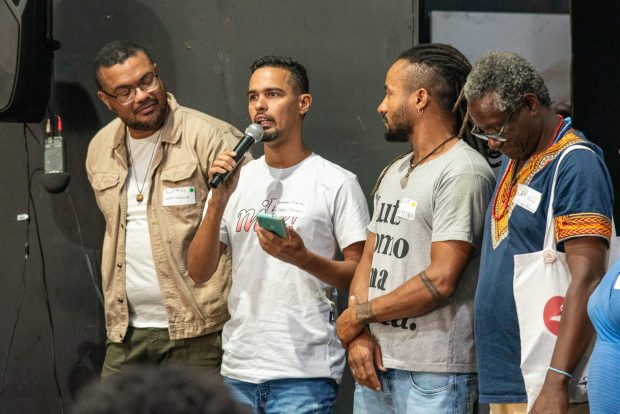
As he spoke, Leonardo Ribeiro, a historian of Antares, in Santa Cruz—the community where he was born and raised—and a collaborator at the Historic Orientation and Research Nucleus of Santa Cruz, said that helping build the climate memory circles allowed him to reconstruct his own family’s history.
“This climate memory [project] brought us an incredibly rich opportunity to access a kind of knowledge we’d always been looking for—a connection between favelas. It’s truly powerful. The first climate memory circle took place here, at the Maré Museum, where, on March 12, 1975—50 years ago now—my mom was forcibly evicted from Maré, for several [alleged] reasons. [Authorities said it was because of] meningitis, cleaning up the city, job searches… All this to hide the main reason, which was to remove favela residents from the central region of the city. She walked down this very street, carrying her few belongings and her children, to get on the truck bound for Antares, over 70 kilometers (~40 miles) away, without knowing exactly where she was going.” — Leonardo Ribeiro
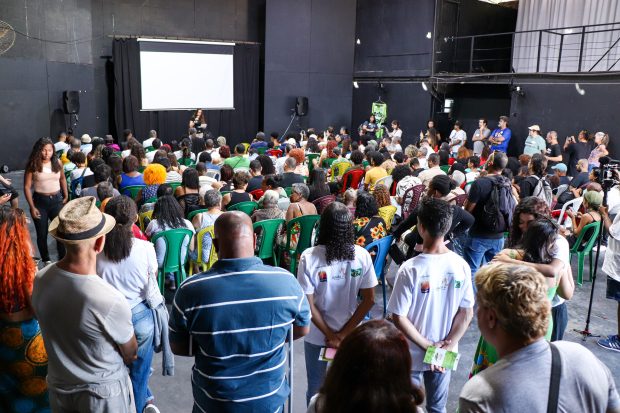
Douglas Heliodoro, from the Conexões Periféricas-RP collective—which held the circle in Rio das Pedras—spoke about the importance of the climate memory circle as a moment of connection between elders and youths, especially in terms of knowledge and community development.
“In Rio das Pedras, the river that gives our favela its name was gradually killed over the years, while the favela was built with its back to this important river. So, being able to host this [climate memory] circle and connect the memories of the older residents with the younger ones, which is a goal of the Conexões Periféricas collective—our idea is to connect ancestral knowledge with academic knowledge—connect academia with the favela, connect people. And we managed to do that in this circle, which was incredible.” — Douglas Heliodoro
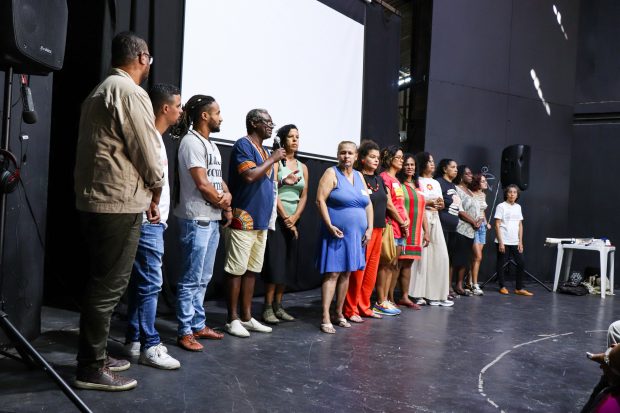
Antônio Carlos Firmino—cofounder of the Sankofa Memory and History Museum in Rocinha—explained that climate memory circles bring to light not only the problems faced by favelas, but also the broader struggle for rights.
“Discussing climate memory is… [about discussing] rights… We’re talking about basic rights that have always been denied to us, especially because we’ve never been accepted within this society. We’re talking about that right, that memory.” — Antônio Carlos Firmino
Marli Damascena, cofounder of the Maré Museum, highlighted how impactful it was to participate in the climate memory circles in Maré and other favelas, and how they helped build a shared understanding of history among the participating communities.
“I was born here in Maré, in Morro do Timbau. I witnessed all the changes Maré has gone through since the 1940s—all of this transformation. The first [climate memory] circle was held here, in our museum. I went to the others too. They were very moving. Each one with its own story, but when we started putting them together, the stories always ended up being similar.” — Marli Damascena
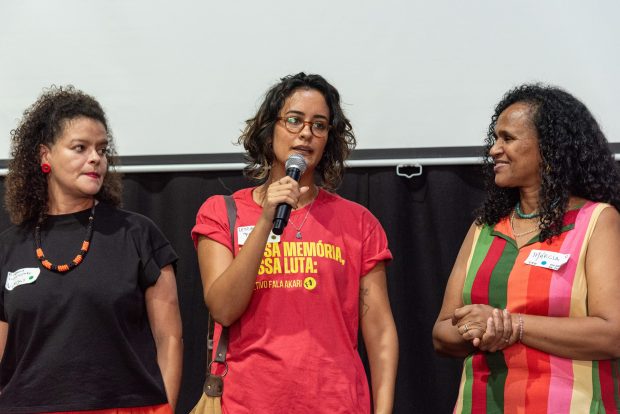
Leticia Pinheiro, born and raised in the Acari favela and a member of the Fala Akari collective, emphasized the importance of working through a network to produce memory and to call out the historical erasure that favelas face.
“It’s an honor to be working in connection with the Sustainable Favela Network, because we see that the oppressions we face in Acari are also experienced in many other favelas, and that we are interconnected in this process. And above all, when we think about memory, there is something very important in what we do and what we have managed to bring together here. The memory produced in our community is also a form of resistance—it denounces the erasure of our own history. So this space is very important. We’re sharing our memories here because we also have a commitment to those who come after us.” — Leticia Pinheiro
Márcia Souza, born and raised in Cantagalo and co-founder of the Favela Museum, felt that during the climate memory circles, people were able to engage with a sense of belonging that emerges when we realize the problems we face are shared. From this collective connection, she saw how vulnerability can become the ground for collective solutions.
“What we felt and lived through in those moments was the same for all of us. So we stopped feeling alone. Even though we’ve been abandoned by the government—by those who should be taking care of us—we realized that by coming together, we can help each other, we can find solutions. So in each situation, something better happened—something good, something we learned from. And together, working as a network, we’re learning to build on what was good in each other’s experiences. That’s how we’re building a better future. Keeping these memories alive, keeping these circles going, growing them more and more—that’s the most important thing for me right now, as part of this network.” — Márcia Souza
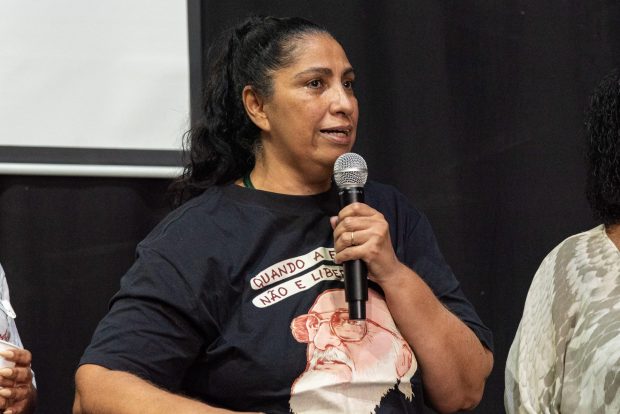
Iara Oliveira, founder and coordinator of Alfazendo, and born the same year City of God came into being, said she witnessed all the changes the favela has been through. She explains that “the favela has always been a circle,” because knowledge exchange has always been key. According to her, this creates a local identity—crucial for driving engagement in the search of solutions by the favela, for the favela.
“I watched City of God become what it is today. And from where I stand, I can see it’s a web—a web of life, affection, solidarity, learning… The favela has always been a circle. When we were kids, every night we would light a bonfire in the center and the younger ones would stand around the elders telling their origin stories. I don’t know if everyone knows the story of City of God, but it brought together people from 55 to 57 different favelas. So they had to rebuild a new story in that place. The saddest part is that [today] people don’t have any memory of that. We need to work on our youth’s sense of identity—because without identity, there’s no struggle; without identity, there’s no local development. And local development doesn’t come from the outside in—it happens from the inside out. If we don’t believe in the places we live… if we don’t build these places—because favelas are built by those who live in them—[no one else will]. The identity is ours. If we keep thinking solutions for the favela will come from outside, we’ll never have local development.” — Iara Oliveira
Emilia de Souza, co-founder of the Horto Museum, emphasized that community museums are powerful spaces for safeguarding favela memories, and the importance of this for local empowerment.
“The best way for us to fight for recognition is through our memory—an instrument no government institution can take from us. It’s a treasure we have, and one we must value. That’s why it’s so important for us to be part of networks that value community museums, networks that recognize grassroots museology—because we are the ones who built this city through our memories and our labor. The governments that excluded our families from the city never expected us to regroup like this, to grow stronger through our stories and our memories—memories we will never let be erased.” — Emilia de Souza
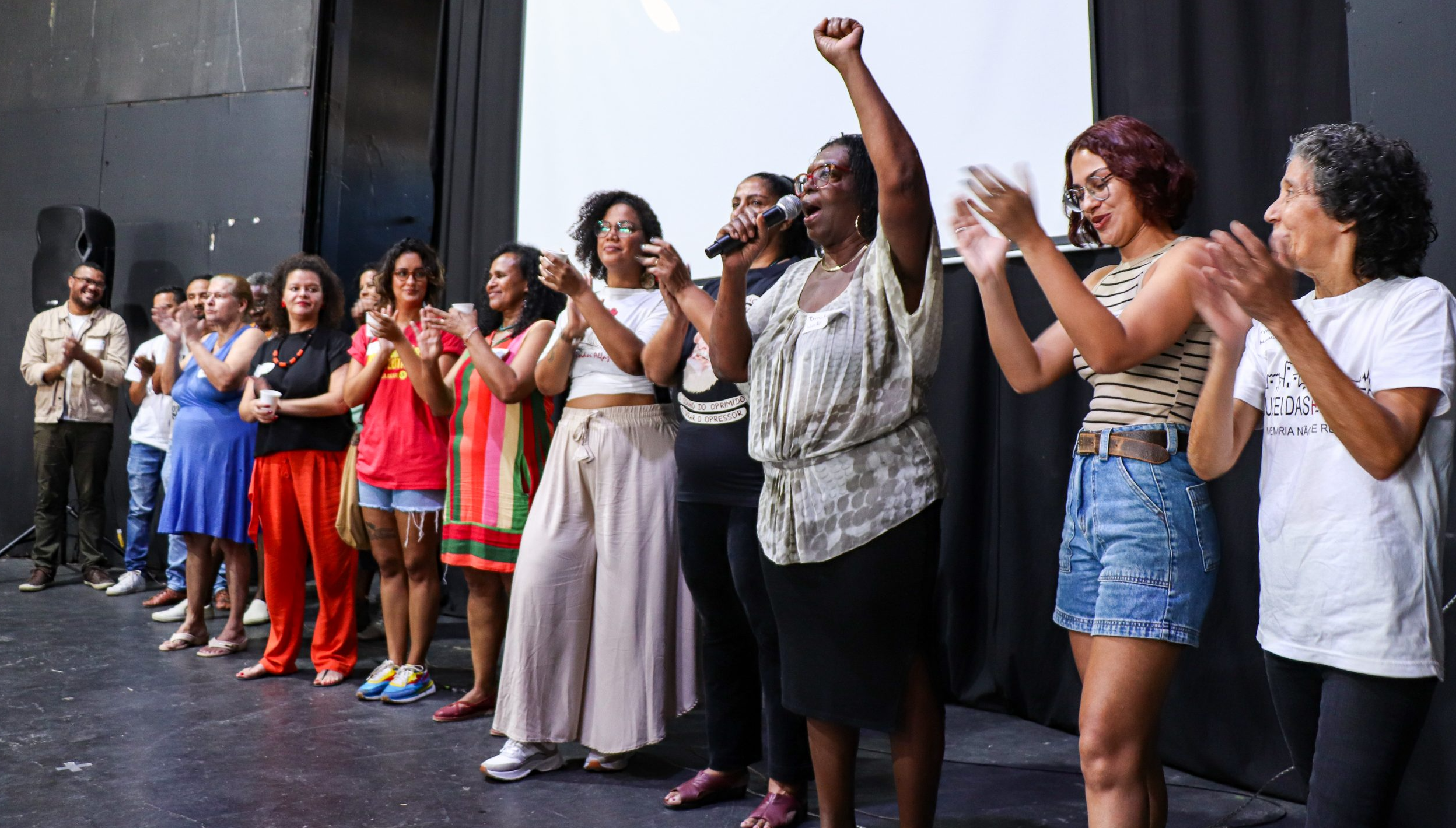
Júlia Soares, resident of Complexo da Penha and researcher at the Serra da Misericórdia Integration Center (CEM)—which held the climate memory circle in Complexo da Penha—explained Penha’s origins as a quilombo [historical spaces of Afro-Brazilian resistance] and how the area still faces challenges to this day. She also stated that oral traditions must be reclaimed as a tool for collective construction.
“Complexo da Penha, which is made up of numerous favelas, was a quilombo built by enslaved people and their descendants. And despite being an older favela, it still faces many issues with violence—both social and environmental. We have many problems with garbage. Our circle was beautiful. I think this event is beautiful. First, because we’re talking about orality, a practice we’ve forgotten over time. And second, because we’re talking about ourselves—the favela talking about the favela. That’s extremely important. There’s a song that says: ‘Get up, people! Wake up, people! Our culture is saving many lives.’ I think that’s what we’re doing today: remembering our culture, remembering who we are, remembering the practices of our ancestors.” — Júlia Soares
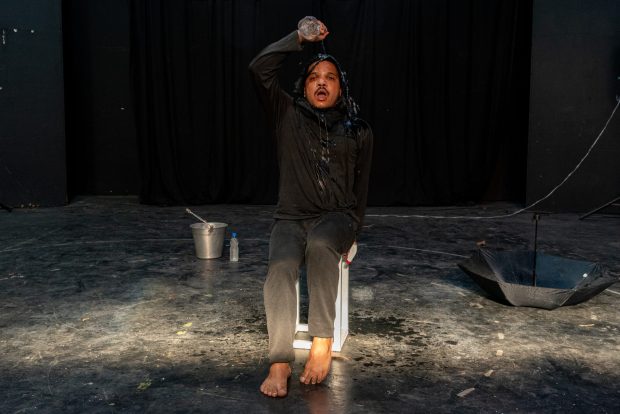
After participants shared their reflections on the realization of the climate memory circles, the day continued with screenings of the full Favela Climate Memory documentary, as well as playful activities for children led by Ecoa Maré using toys made from recycled materials. The event also featured performances by participants of the Maré-based theater course Entre Lugares (Between Places), including the sketches Tales from Luzimar and Maré Tales and Legends, which brought to life memories and stories of local characters. Another performance, Climão (Heavy Weather), explored the suffocating effects climate change can bring, especially in favelas. The day closed with a ritual led by Abebe, a participant from the Penha circle, who brought ancestral aromatic herbs to bless those in attendance.
Starting in August, the exhibition will travel to the favelas of Acari, Rio das Pedras, City of God and Vidigal, touring local schools and bringing the knowledge of elders—captured in the exhibition—to young people, in a much-needed intergenerational exchange.
Lidiane Santos, also a coordinator at Alfazendo and host of the climate memory circle in City of God, explained how important it was to invite older residents to share the memories of their community.
“Being part of a climate memory circle was very important for us, because we’ve long been fighting for memory—for recording our speech, our oral histories, and our struggles. We saw that our story is tied to the stories of other favelas. It became our mission to be there, to bring our older women and elders, and to document our pain, our struggles, and our achievements.” — Lidiane Santos
Watch the Full Launch Video on YouTube Here.
See the Full Album by Alexandre Cerqueira and Bárbara Dias on Flickr:
Visit this must-see exhibition, open to the public until July 30 in the Maré Museum’s temporary gallery—book your visit here. If you’re interested in bringing the Favela Climate Memory exhibition to your institution or community, check out the guidelines on how to request it.
*The Sustainable Favela Network (SFN) and RioOnWatch are both initiatives realized by not-for-profit organization Catalytic Communities (CatComm).

